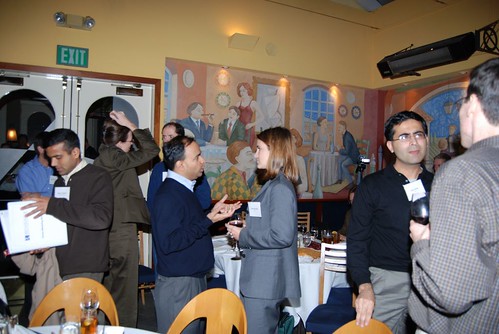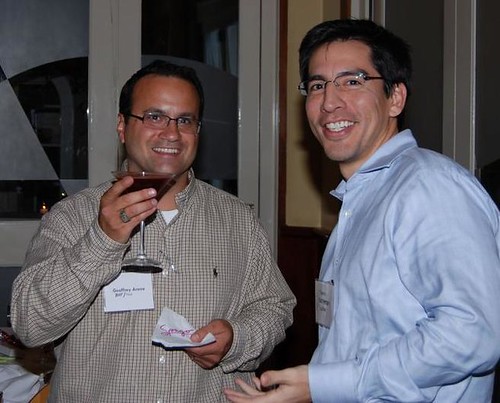Valleywag is delighting in a string of negative press accounts this week about Lifelock, a company we funded late last year. The online gossip column goes so far as to say that Bessemer and our co-investor Kleiner Perkins Caufied & Byers were shamefully bamboozled by the company's founder Robert Maynard.
Normally I don't respond to vicious personal attacks--after all there are so many, Who Has Time For This? But to the extent that anyone questions Lifelock's integrity and consumer utility, I feel obliged to weigh in as an insider with some answers...
Is Lifelock founder Robert Maynard a bad guy?Robert suffers from bipolar disease, a serious
mental health disorder that invariably leads to impaired thinking and erratic behavior when untreated. Sufferers of bipolar disease commonly have manic episodes that end with dire financial and legal consequences. Anyone experienced in bipolar (as I became years ago, when someone close to me was diagnosed) understands the negative behavior for what it is--a treatable medical symptom. It is no more a character flaw than President Roosevelt's polio.

With a diagnosis and proper treatment, Robert has built his third company responsibly. Self-aware, he recruited a professional team and an independent board of directors from which he disqualified himself. To protect the company, Robert retained no control through ownership, board participation, or office. During my time as an investor in Lifelock, Robert has impressed me as a brilliant, creative thinker whom other Bessemer entrepreneurs continue to call upon for advice. Robert is kind and thoughtful, and after 15 years as a VC, I haven't seen a founder more loved and respected by his company's employees. (A former U.S. Marine who champions liberal causes, Robert reminds me of another great entrepreneur,
Dan Farmer.) Though it would be more profitable to distance myself from such a controversial figure, nonetheless I am proud to call Robert my friend.
Was Bessemer bamboozled?Yes, many times. But not by Lifelock.
During our investigation of the company, the CEO was up front in every way, including disclosure of Robert Maynard's past, his bankruptcies, his medical condition, and the FTC order against his participation in the credit repair industry (where Lifelock doesn't play). I understood the baggage Robert Maynard has been carrying with him--he isn't the first entrepreneur treated for bipolar disease whose startup I have backed, and he may not be the last.
Furthermore, we feel anything but bamboozled. The Company's financial performance has more than doubled the revenue and cash flow forecasted in Lifelock's business plan. Customer churn is way below any subscription service I have seen, and persists at less than half the rate Lifelock had projected.
Was I embarrassed, as Valleywag insists?Yes, many times. But not by Lifelock.
It's actually funny (and a little flaterring, really) to see Valleywag go after me so personally in their column, but I'm surprised they couldn't dig up any better dirt on me (really, they just missed the whole atheist angle). Yes, it's true that I'm a director of the "troubled Flock", and it's true that Flock is behind schedule releasing the best browser software in the world (which you'll all get your hands on later this year). It's not true that I'm leading a round in TechCrunch (but I'd like to, Michael, if I can).
Can consumers trust Lifelock?As a veteran investor of Verisign, Postini, Counterpane, Cyota and several other security service providers, I know what a challenge it is to overcome the suspicions raised by sensational journalism, and the allegations of competitors who covet success. Lifelock embraces every practice we can to operate transparently and in the best interest of the customer--including
ISO 27001 certification of our call center and data infrastructure--and surely we still have many lessons yet to learn. But even when we do, we will always have to endure conspiracy theories.
So rather than fight the storm of bad press, Robert Maynard simply resigned from the company this past Monday. It's a shame to lose the vision and day-to-day involvement of a great founder, but I share Robert's hope that his past will no longer be a lightning rod for Lifelock's detractors.
I subscribed my own family to Lifelock long before I invested. From 1995 to 2005, there were
over 8 reported breaches of personal credential data for every American adult, and so it's reasonable to fear ID theft.
As I've explained, nothing protects me better than Lifelock's rigorous maintenance of fraud alerts for my credit profiles.
Blogged with Flock
 Surely the evil goddess Insomnia herself cursed us mortals with those tightly tucked in corners that pin us down for the count, relentlessly pressing down upon our toes. And just as clearly, she has charged her minions in Hotel Housekeeping to prosecute the nightly terror. Euphemistically deemed a “turn-down service”, their mission is to (i) maximize tension in the sheets just prior to bedtime; (ii) heap layers of heavy bedcovers upon the real estate designated for our feet—defying us to handle the germy, never-been-washed bedspread ourselves; and (iii) deposit tasty (but caffeinated!) chocolate on our nightstands to pharmaceutically reinforce wakefulness.
Surely the evil goddess Insomnia herself cursed us mortals with those tightly tucked in corners that pin us down for the count, relentlessly pressing down upon our toes. And just as clearly, she has charged her minions in Hotel Housekeeping to prosecute the nightly terror. Euphemistically deemed a “turn-down service”, their mission is to (i) maximize tension in the sheets just prior to bedtime; (ii) heap layers of heavy bedcovers upon the real estate designated for our feet—defying us to handle the germy, never-been-washed bedspread ourselves; and (iii) deposit tasty (but caffeinated!) chocolate on our nightstands to pharmaceutically reinforce wakefulness.

 I've been asked three times now for the text of my toast at last night's closing dinner for the Postini/Google deal. Here it is (the heroes mentioned in this ballad are founder
I've been asked three times now for the text of my toast at last night's closing dinner for the Postini/Google deal. Here it is (the heroes mentioned in this ballad are founder 




 My family didn't pick the Big Island of Hawaii to be adventurous--it was supposed to be a relaxing vacation. But this morning our jet lag awoke us before dawn to see
My family didn't pick the Big Island of Hawaii to be adventurous--it was supposed to be a relaxing vacation. But this morning our jet lag awoke us before dawn to see 
 Well, there turned out to be no need for negotiation. The driver Steve Pauley politely introduced himself and the
Well, there turned out to be no need for negotiation. The driver Steve Pauley politely introduced himself and the 
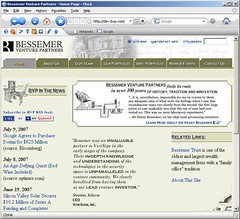
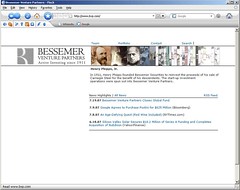

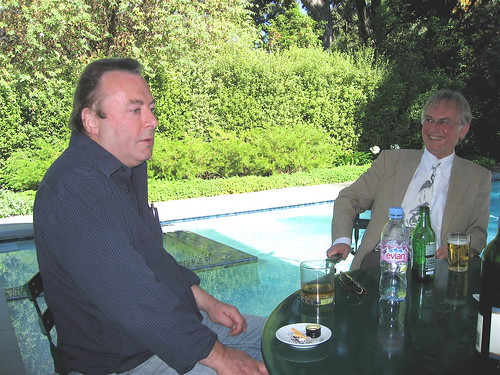 The dinner brought the two bestselling authors together for the first time--a chance for them to collaborate on responses to their common critics (see image right, courtesy
The dinner brought the two bestselling authors together for the first time--a chance for them to collaborate on responses to their common critics (see image right, courtesy 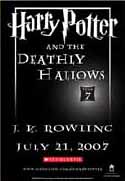







 With a diagnosis and proper treatment, Robert has built his third company responsibly. Self-aware, he recruited a professional team and an independent board of directors from which he disqualified himself. To protect the company, Robert retained no control through ownership, board participation, or office. During my time as an investor in Lifelock, Robert has impressed me as a brilliant, creative thinker whom other Bessemer entrepreneurs continue to call upon for advice. Robert is kind and thoughtful, and after 15 years as a VC, I haven't seen a founder more loved and respected by his company's employees. (A former U.S. Marine who champions liberal causes, Robert reminds me of another great entrepreneur,
With a diagnosis and proper treatment, Robert has built his third company responsibly. Self-aware, he recruited a professional team and an independent board of directors from which he disqualified himself. To protect the company, Robert retained no control through ownership, board participation, or office. During my time as an investor in Lifelock, Robert has impressed me as a brilliant, creative thinker whom other Bessemer entrepreneurs continue to call upon for advice. Robert is kind and thoughtful, and after 15 years as a VC, I haven't seen a founder more loved and respected by his company's employees. (A former U.S. Marine who champions liberal causes, Robert reminds me of another great entrepreneur, 











 The Internet Protocol treats all packets equally, but there are various reasons why someone might want a "fast lane" for packets. Content publishers and VOIP carriers deliver media streams whose packets expire if they arrive late. E-commerce vendors lose money when impatient shoppers abandon carts due to router congestion caused by all those media streams. So demand grows for express services, and a number of technology vendors, ranging from startups to Cisco, increasingly offer ISPs technologies for delivering them.
The Internet Protocol treats all packets equally, but there are various reasons why someone might want a "fast lane" for packets. Content publishers and VOIP carriers deliver media streams whose packets expire if they arrive late. E-commerce vendors lose money when impatient shoppers abandon carts due to router congestion caused by all those media streams. So demand grows for express services, and a number of technology vendors, ranging from startups to Cisco, increasingly offer ISPs technologies for delivering them.

 Engineers have done pretty well so far building the internet without regulatory oversight. If we now erect a glorious bureaucracy of regulators who painstakingly review every upgrade to a broadband carrier, the one thing I am sure of is that US carriers will immediately lose market share to their competitors. The state of the U.S. internet backbone itself will freeze both in capacity and technology as the rest of the planet leapfrogs our creaky, petrified infrastructure.
Engineers have done pretty well so far building the internet without regulatory oversight. If we now erect a glorious bureaucracy of regulators who painstakingly review every upgrade to a broadband carrier, the one thing I am sure of is that US carriers will immediately lose market share to their competitors. The state of the U.S. internet backbone itself will freeze both in capacity and technology as the rest of the planet leapfrogs our creaky, petrified infrastructure. 
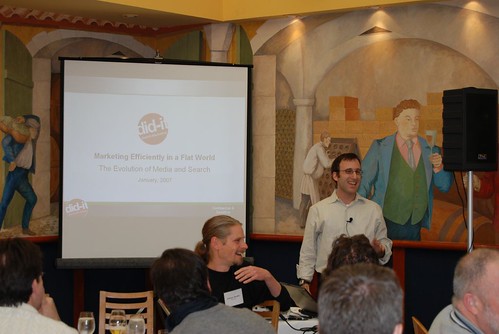 We also set aside some time for best-of-class (non-Bessemer) vendors to present (videos
We also set aside some time for best-of-class (non-Bessemer) vendors to present (videos 